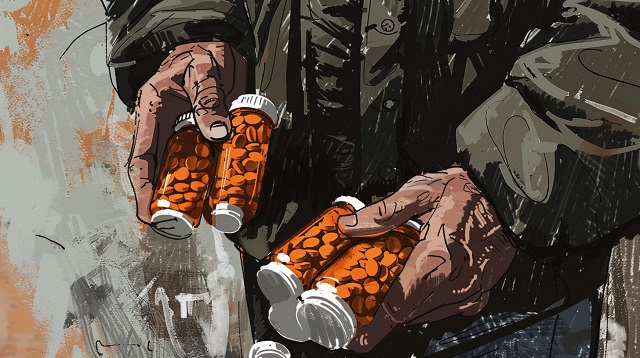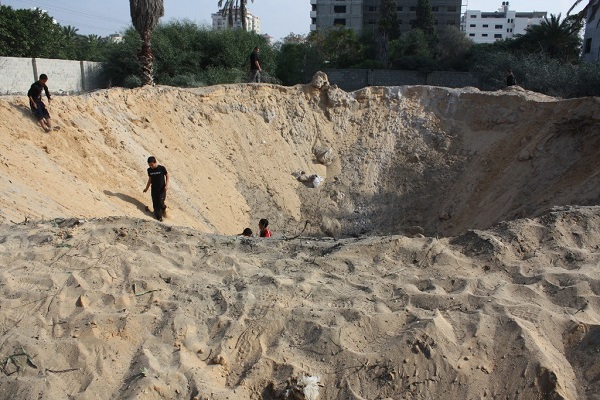Alberta
ASIRT releases findings on shooting death of armed suspect

From Alberta Serious Incident Response Team: RCMP acted reasonably in shooting fatality during arrest
On Jan. 7, 2017, ASIRT was directed to investigate the circumstances surrounding the death of a 27-year-old man during an attempted arrest by the RCMP that same day.
During a planned entry into a Stoney Nakoda First Nation residence to locate the man and two others suspected of involvement in a recent homicide, a confrontation occurred that resulted in the man being shot by an RCMP Emergency Response Team (ERT) officer.
ASIRT interviewed police and civilian witnesses, including the individuals present in the home that day and the involved officers. As well, the crime scene was examined, and photographs, radio communications and all available video were seized. ASIRT’s investigation is complete.
Having reviewed the investigation, executive director Susan Hughson, QC, concluded there were no reasonable grounds, nor reasonable suspicion, to believe a police officer committed a criminal offence.
On Jan. 7, 2017, RCMP executed several arrest warrants at residences on the Stoney Nakoda First Nation in search of three men, wanted for a murder that had occurred six days earlier. At the time, RCMP had information that the 27-year-old man had also been in possession of a firearm, which violated a court-ordered prohibition in effect until 2025. As such, the execution of the warrants was deemed to be high risk.
At approximately 4 p.m., ERT simultaneously sent teams to execute the warrants at two neighbouring homes, one being the home of the family of the 27-year-old man and his brother, also wanted in relation to the same homicide. The father of the men met the officers at the doorway to the residence. Officers located the brother inside on the first floor and arrested him without incident. As the officers proceeded further into the home, several other people were located and contained on the main level while others emerged from the basement. When asked whether anyone was still in the basement, the officers were told no.
A number of officers went down to clear the basement, announcing that they were police and that they had a warrant. As they moved along an interior wall towards a doorway in the basement, a man, later confirmed to have been the 27-year-old man, yelled at the officers to get out and leave him alone. A single shot was then fired from the opposite side of the wall, penetrating through drywall and narrowly missing the officers. The officers called out “shots fired”, returned to the main floor and, after throwing a tear gas canister into the basement, evacuated the residence.
At this point, officers were aware that they were dealing with an armed man and took up positions to contain the residence after everyone had been moved to safety. At this point, the RCMP would have had the benefit of time and resources.
One officer went towards the treeline on the west side of the residence to establish a rear sniper point. He positioned himself behind an old washing machine approximately 12 metres away from the house. While doing so, a gunshot was heard, believed to have come from the southwest corner of the basement near the basement window closest to the officer, and the officer reported hearing the sound of breaking glass.
Almost immediately, a woman climbed out of the window. As the officer yelled commands for her to walk towards him, the 27-year-old man emerged from the same basement window with a shotgun in his hands, carried at waist level and pointing in the direction of the officer and the young woman. The officer fired a single shot from his rifle, striking the 27-year-old man in the torso, causing him to collapse to the ground. Other ERT members moved in to secure the man and the shotgun, and to render emergency aid.
With the tear gas coming out of the basement window, RCMP moved the man and placed him on a jacket on the snow-covered ground to prevent hypothermia. The RCMP loaded the man into an RCMP vehicle and transported him to an ambulance waiting a short distance away, as the house and scene had not yet been cleared and confirmed safe by ERT officers. These officers re-entered the residence and found it empty.
The man was transported to a Calgary hospital where he was declared deceased. He sustained a single gunshot wound to the abdomen that injured internal organs and his spinal cord. More significantly, it cut through the main abdominal artery. This resulted in substantial hemorrhage and death. Toxicology was positive for methamphetamine.
The man’s gun, a 12-gauge tactical shotgun, was recovered loaded with three unfired shells. The pump action was in the forward firing position.
Section 25 of the Criminal Code states that a police officer is authorized to use as much force as is reasonably necessary in the execution of his or her duties. When necessary, an officer is entitled to resort to lethal force where there are, subjectively and objectively, grounds to believe that the person presents a risk of imminent bodily harm or death to the officer or another person. Lastly, an officer may use lethal force to prevent flight in limited circumstances.
The evidence is unequivocal that the 27-year-old man called out and fired upon the officers as they descended the stairs to clear the basement. The only other person in the basement was the unarmed woman who had exited the residence just ahead of the man. The woman confirmed that, although she did not see the events leading up to the officer-involved shooting, she immediately turned after the gunshot and saw officers approach the man and kick the shotgun away from the man as he laid on the ground.
Both objectively and subjectively, the man presented a risk of imminent grievous bodily harm or death to the officer, and potentially to the woman who would have been in the line of fire. The officer was lawfully placed and acting in the lawful execution of his duty. In the circumstances, the force used was both reasonable and authorized under the Criminal Code. There being no grounds to believe that an offence was committed by a police officer, no charges will be laid.
ASIRT’s mandate is to effectively, independently and objectively investigate incidents involving Alberta’s police that have resulted in serious injury or death to any person.
Alberta
Game changer: Trans Mountain pipeline expansion complete and starting to flow Canada’s oil to the world

Workers complete the “golden weld” of the Trans Mountain pipeline expansion on April 11, 2024 in the Fraser Valley between Hope and Chilliwack, B.C. The project saw mechanical completion on April 30, 2024. Photo courtesy Trans Mountain Corporation
From the Canadian Energy Centre
By Will Gibson
‘We’re going to be moving into a market where buyers are going to be competing to buy Canadian oil’
It is a game changer for Canada that will have ripple effects around the world.
The Trans Mountain pipeline expansion is now complete. And for the first time, global customers can access large volumes of Canadian oil, with the benefits flowing to Canada’s economy and Indigenous communities.
“We’re going to be moving into a market where buyers are going to be competing to buy Canadian oil,” BMO Capital Markets director Randy Ollenberger said recently, adding this is expected to result in a better price for Canadian oil relative to other global benchmarks.
The long-awaited expansion nearly triples capacity on the Trans Mountain system from Edmonton to the West Coast to approximately 890,000 barrels per day. Customers for the first shipments include refiners in China, California and India, according to media reports.
Shippers include all six members of the Pathways Alliance, a group of companies representing 95 per cent of oil sands production that together plan to reduce emissions from operations by 22 megatonnes by 2030 on the way to net zero by 2050.
The first tanker shipment from Trans Mountain’s expanded Westridge Marine Terminal is expected later in May.
 Photo courtesy Trans Mountain Corporation
Photo courtesy Trans Mountain Corporation
The new capacity on the Trans Mountain system comes as demand for Canadian oil from markets outside the United States is on the rise.
According to the Canada Energy Regulator, exports to destinations beyond the U.S. have averaged a record 267,000 barrels per day so far this year, up from about 130,000 barrels per day in 2020 and 33,000 barrels per day in 2017.
“Oil demand globally continues to go up,” said Phil Skolnick, New York-based oil market analyst with Eight Capital.
“Both India and China are looking to add millions of barrels a day of refining capacity through 2030.”
In India, refining demand will increase mainly for so-called medium and heavy oil like what is produced in Canada, he said.
“That’s where TMX is the opportunity for Canada, because that’s the route to get to India.”
Led by India and China, oil demand in the Asia-Pacific region is projected to increase from 36 million barrels per day in 2022 to 52 million barrels per day in 2050, according to the U.S. Energy Information Administration.
More oil coming from Canada will shake up markets for similar world oil streams including from Russia, Ecuador, and Iraq, according to analysts with Rystad Energy and Argus Media.
Expanded exports are expected to improve pricing for Canadian heavy oil, which “have been depressed for many years” in part due to pipeline shortages, according to TD Economics.
 Photo courtesy Trans Mountain Corporation
Photo courtesy Trans Mountain Corporation
In recent years, the price for oil benchmark Western Canadian Select (WCS) has hovered between $18-$20 lower than West Texas Intermediate (WTI) “to reflect these hurdles,” analyst Marc Ercolao wrote in March.
“That spread should narrow as a result of the Trans Mountain completion,” he wrote.
“Looking forward, WCS prices could conservatively close the spread by $3–4/barrel later this year, which will incentivize production and support industry profitability.”
Canada’s Parliamentary Budget Office has said that an increase of US$5 per barrel for Canadian heavy oil would add $6 billion to Canada’s economy over the course of one year.
The Trans Mountain Expansion will leave a lasting economic legacy, according to an impact assessment conducted by Ernst & Young in March 2023.
In addition to $4.9 billion in contracts with Indigenous businesses during construction, the project leaves behind more than $650 million in benefit agreements and $1.2 billion in skills training with Indigenous communities.
Ernst & Young found that between 2024 and 2043, the expanded Trans Mountain system will pay $3.7 billion in wages, generate $9.2 billion in GDP, and pay $2.8 billion in government taxes.
Alberta
Alberta government should eliminate corporate welfare to generate benefits for Albertans

From the Fraser Institute
By Spencer Gudewill and Tegan Hill
Last November, Premier Danielle Smith announced that her government will give up to $1.8 billion in subsidies to Dow Chemicals, which plans to expand a petrochemical project northeast of Edmonton. In other words, $1.8 billion in corporate welfare.
And this is just one example of corporate welfare paid for by Albertans.
According to a recent study published by the Fraser Institute, from 2007 to 2021, the latest year of available data, the Alberta government spent $31.0 billion (inflation-adjusted) on subsidies (a.k.a. corporate welfare) to select firms and businesses, purportedly to help Albertans. And this number excludes other forms of government handouts such as loan guarantees, direct investment and regulatory or tax privileges for particular firms and industries. So the total cost of corporate welfare in Alberta is likely much higher.
Why should Albertans care?
First off, there’s little evidence that corporate welfare generates widespread economic growth or jobs. In fact, evidence suggests the contrary—that subsidies result in a net loss to the economy by shifting resources to less productive sectors or locations (what economists call the “substitution effect”) and/or by keeping businesses alive that are otherwise economically unviable (i.e. “zombie companies”). This misallocation of resources leads to a less efficient, less productive and less prosperous Alberta.
And there are other costs to corporate welfare.
For example, between 2007 and 2019 (the latest year of pre-COVID data), every year on average the Alberta government spent 35 cents (out of every dollar of business income tax revenue it collected) on corporate welfare. Given that workers bear the burden of more than half of any business income tax indirectly through lower wages, if the government reduced business income taxes rather than spend money on corporate welfare, workers could benefit.
Moreover, Premier Smith failed in last month’s provincial budget to provide promised personal income tax relief and create a lower tax bracket for incomes below $60,000 to provide $760 in annual savings for Albertans (on average). But in 2019, after adjusting for inflation, the Alberta government spent $2.4 billion on corporate welfare—equivalent to $1,034 per tax filer. Clearly, instead of subsidizing select businesses, the Smith government could have kept its promise to lower personal income taxes.
Finally, there’s the Heritage Fund, which the Alberta government created almost 50 years ago to save a share of the province’s resource wealth for the future.
In her 2024 budget, Premier Smith earmarked $2.0 billion for the Heritage Fund this fiscal year—almost the exact amount spent on corporate welfare each year (on average) between 2007 and 2019. Put another way, the Alberta government could save twice as much in the Heritage Fund in 2024/25 if it ended corporate welfare, which would help Premier Smith keep her promise to build up the Heritage Fund to between $250 billion and $400 billion by 2050.
By eliminating corporate welfare, the Smith government can create fiscal room to reduce personal and business income taxes, or save more in the Heritage Fund. Any of these options will benefit Albertans far more than wasteful billion-dollar subsidies to favoured firms.
Authors:
-

 conflict1 day ago
conflict1 day agoOver 200 Days Into War, Family Of American Hostage in Gaza Strives For Deal To Bring Son Home
-

 Brownstone Institute1 day ago
Brownstone Institute1 day agoBook Burning Goes Digital
-

 Brownstone Institute20 hours ago
Brownstone Institute20 hours agoThe Predictable Wastes of Covid Relief
-

 Alberta12 hours ago
Alberta12 hours agoGame changer: Trans Mountain pipeline expansion complete and starting to flow Canada’s oil to the world
-

 Addictions12 hours ago
Addictions12 hours agoCanada’s ‘safer supply’ patients are receiving staggering amounts of narcotics
-

 Community9 hours ago
Community9 hours agoLast Day: What would you do with $20,000 Early Bird Prize?
-

 Bruce Dowbiggin8 hours ago
Bruce Dowbiggin8 hours agoDo It Once, Shame On You; Do It Twice, Shame On Me
-

 conflict7 hours ago
conflict7 hours agoImmigration Experts Warn Possible Biden Plan To Import Gazan Refugees Would Be ‘National Security Disaster’









